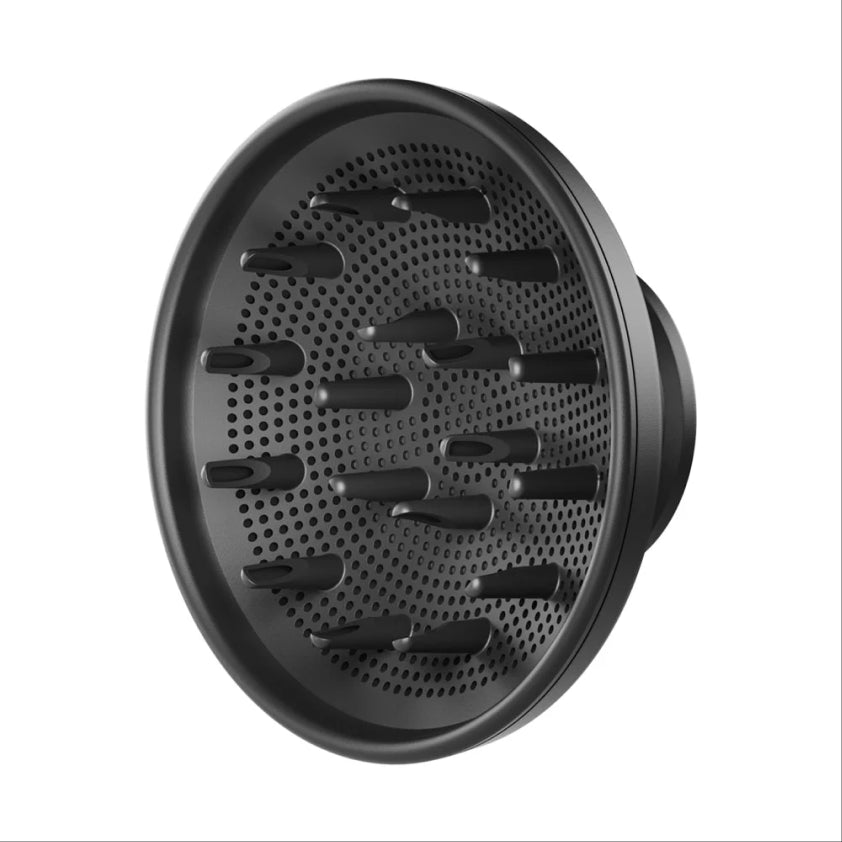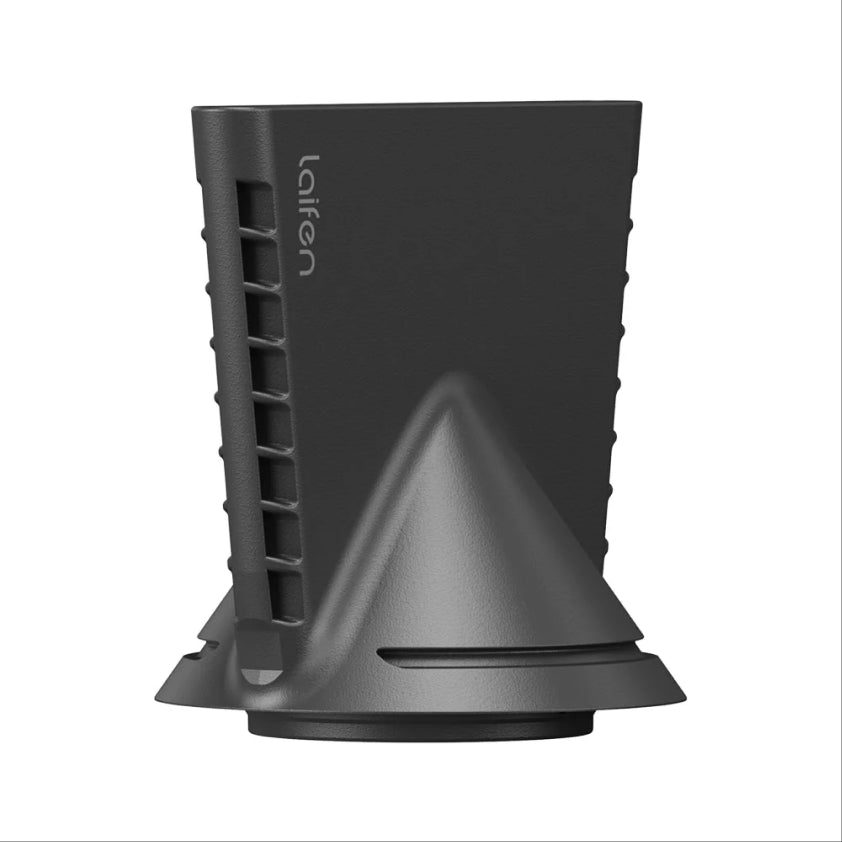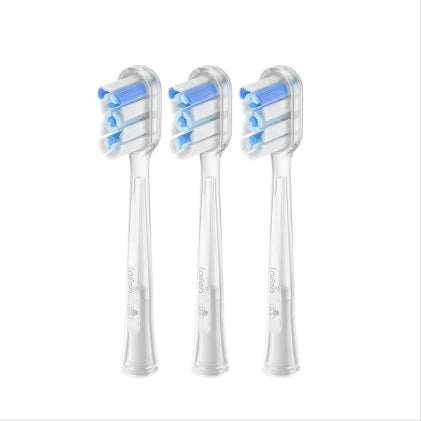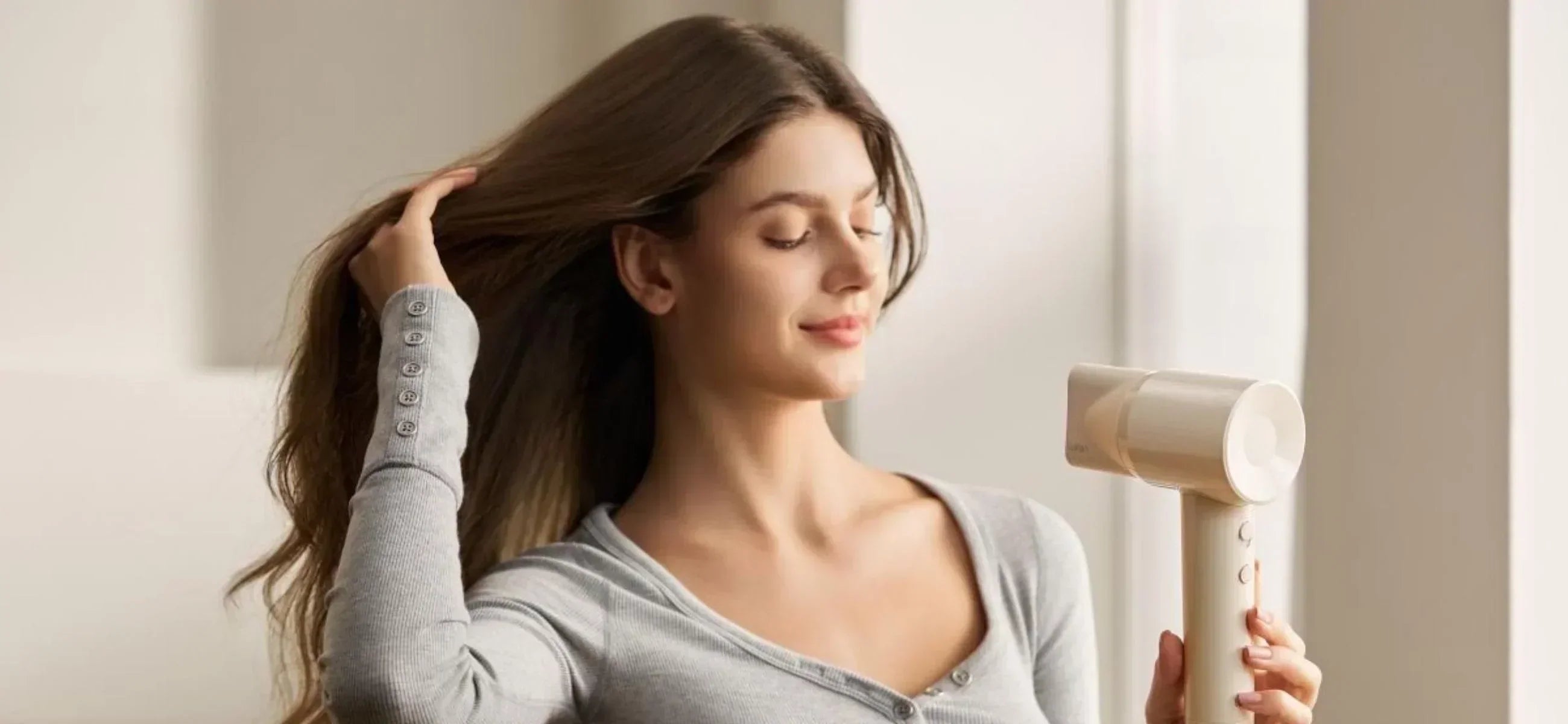
In this article
- Nettoyage des dents avec un appareil dentaire – Utilisation d’un appareil dentaire fixe
- Comment se brosser les dents avec un appareil dentaire
- Conseils d'entretien des appareils dentaires
- Quelle brosse à dents sonique choisir quand on porte un appareil dentaire ?
- Quelle brosse à dents électrique choisir pour un appareil dentaire fixe ?
- FAQ – Brossage avec un appareil dentaire
Il est essentiel de maintenir une bonne hygiène bucco-dentaire, surtout lorsque vous portez un appareil dentaire. Se brosser les dents avec un appareil dentaire peut être difficile, mais il existe des moyens efficaces de garder vos dents et votre appareil dentaire propres. Que vous ayez un appareil dentaire amovible ou fixe, il est essentiel de comprendre comment bien nettoyer vos dents. Le nettoyage de l'appareil dentaire lui-même est tout aussi important. Dans cet article, nous allons vous expliquer en détail comment réussir à vous brosser les dents tout en portant un appareil dentaire.
Nettoyage des dents avec un appareil dentaire – Utilisation d’un appareil dentaire fixe
Beaucoup de personnes se demandent : « Puis-je utiliser une brosse à dents électrique avec un appareil dentaire ? » La réponse est claire : oui ! Les brosses à dents électriques, comme la Laifen Wave, sont encore plus efficaces que les brosses à dents manuelles pour nettoyer les dents avec un appareil dentaire.
Conseils pour se brosser les dents avec un appareil dentaire
Le brossage des dents avec un appareil dentaire requiert de la technique, de l'habileté et des connaissances. L'appareil dentaire et les dents doivent être nettoyés soigneusement. Il est également essentiel de choisir la bonne brosse à dents . Il faut choisir une brosse à poils souples pour prendre soin des gencives en douceur tout en éliminant efficacement la plaque dentaire.
Certaines brosses à dents sont dotées de modes spéciaux particulièrement adaptés au brossage avec un appareil dentaire. Lors du brossage, effectuez toujours des mouvements circulaires doux pour éviter d'endommager l'appareil dentaire ou les gencives.
Vous ne devez jamais oublier d’utiliser du fil dentaire. Il doit être utilisé après le brossage pour éliminer les particules alimentaires coincées entre les dents, zones qui ne sont pas forcément accessibles avec une brosse à dents.
Comment se brosser les dents avec un appareil dentaire
La clé du brossage des dents avec un appareil dentaire est la minutie. Vous devez vous assurer que vos dents et votre appareil dentaire sont correctement nettoyés. Voici quelques techniques essentielles à suivre :
1. Utilisez la bonne brosse à dents
Lors du brossage des dents avec un appareil dentaire, choisissez une petite brosse à poils ronds et doux. Cela vous permettra de nettoyer délicatement autour des brackets et des fils sans les endommager. Les brosses à dents électriques peuvent assurer un nettoyage plus rapide et plus approfondi.
2. Nettoyez soigneusement vos dents
Commencez par nettoyer les surfaces extérieures de vos dents. Positionnez les poils à un angle de 45 degrés par rapport à la surface de la dent, sous les fils et autour des brackets. Cela facilite l'élimination de la plaque dentaire. N'oubliez pas de nettoyer les surfaces de mastication et les parties intérieures de vos dents.
3. Utilisez du fil dentaire
L'utilisation du fil dentaire est essentielle ! Il permet de nettoyer les zones entre vos dents et vos brackets. Le fil dentaire élimine les particules alimentaires et la plaque dentaire difficiles à atteindre avec une brosse à dents. Par conséquent, après le brossage avec un appareil dentaire, l'utilisation du fil dentaire doit toujours faire partie de la routine.
4. Rincer
Après le brossage, rincez-vous soigneusement la bouche. Un bain de bouche au fluor peut aider à prévenir les caries et à renforcer vos dents.
5. Nettoyez régulièrement les appareils orthodontiques
Les appareils orthodontiques doivent être nettoyés. Des gels nettoyants et des bains de bouche spéciaux sont disponibles pour les appareils orthodontiques afin de garantir leur bon état.
6. Vérifiez la présence de plaque et de débris alimentaires
Après le brossage, vérifiez que vos dents et votre appareil dentaire ne présentent pas de plaque ou de particules alimentaires. Utilisez un miroir pour vous assurer que toutes les zones ont été correctement nettoyées.
7. Gardez votre brosse à dents propre
Nettoyez toujours votre brosse à dents après chaque brossage avec un appareil dentaire. Remplacez-la tous les 3 à 4 mois pour maintenir une bonne hygiène.
En suivant ces conseils, vous pouvez garder vos dents et votre appareil dentaire propres, garantissant ainsi plus de confort et une meilleure hygiène bucco-dentaire lorsque vous portez un appareil dentaire.
Conseils d'entretien des appareils dentaires
Voici quelques conseils d’entretien pour vous aider à vous brosser les dents efficacement lorsque vous portez un appareil dentaire :
- Brossez-vous les dents régulièrement : brossez-vous les dents deux fois par jour à l'aide d'une brosse à dents à poils souples. Cela vous aidera à garder vos dents et votre appareil dentaire propres.
- Utiliser du fil dentaire : il est essentiel d'utiliser du fil dentaire , car il y a des zones que la brosse à dents ne peut pas atteindre. Après le brossage avec un appareil dentaire, il est préférable d'utiliser du fil dentaire.
- Bain de bouche : Le bain de bouche au fluor peut renforcer vos dents et aider à éliminer la plaque dentaire.
- Nettoyer les appareils orthodontiques : Nettoyez régulièrement vos appareils orthodontiques. Des gels nettoyants spéciaux et certains bains de bouche sont conçus à cet effet.
- Évitez les aliments collants : les aliments collants doivent être évités car ils peuvent se coincer dans l’appareil dentaire et sont difficiles à retirer.
- Visitez régulièrement le dentiste : planifiez des visites régulières chez le dentiste pour des contrôles et des nettoyages professionnels.
Quelle brosse à dents sonique choisir quand on porte un appareil dentaire ?
Si vous choisissez une brosse à dents sonique pour appareil dentaire, vous devez vous concentrer sur quelques facteurs clés :
- Petites soies arrondies : Une brosse à dents à poils petits et arrondis est idéale pour nettoyer en profondeur autour des supports et des fils.
- Mode de nettoyage spécial pour appareils orthodontiques : certains modèles de brosses à dents sont dotés de modes spécifiques pour les appareils orthodontiques, avec des vibrations douces qui nettoient efficacement tout en protégeant vos gencives.
- Minuterie intégrée : elle permet de garantir que vous respectez le temps de brossage recommandé, ce qui est particulièrement important lorsque vous portez un appareil dentaire.
- Modes de nettoyage multiples : Différents modes vous permettent d'ajuster l'intensité du nettoyage en fonction de vos besoins.
- Vibrations à haute fréquence : Les vibrations élevées par minute aident à éliminer efficacement la plaque dentaire, une préoccupation majeure pour les porteurs d'appareils orthodontiques.
Quelle brosse à dents électrique choisir pour un appareil dentaire fixe ?
Lorsque vous choisissez une brosse à dents électrique pour appareil dentaire fixe, voici ce que vous devez rechercher :
- Petite tête de brosse ronde : ce type de tête de brosse permet un meilleur accès autour des appareils dentaires et des fils.
- Mode Vibration Douce : Un mode spécifique pour les appareils orthodontiques fournit des vibrations douces, assurant un nettoyage en profondeur sans provoquer d'irritation des gencives.
- Minuterie intégrée : elle vous aidera à maintenir le temps de brossage recommandé d'au moins deux minutes.
- Modes de nettoyage multiples : différents modes vous aident à basculer entre les intensités de nettoyage en fonction de vos besoins d'hygiène bucco-dentaire.
- Ondes sonores à haute fréquence : Les fréquences sonores élevées assurent l’élimination efficace de la plaque dentaire, en particulier autour des zones difficiles d’accès.
La brosse à dents Wave de Laifen est un exemple de brosse à dents qui répond à ces critères. Elle offre un nettoyage puissant, des vibrations douces et une longue durée de vie de la batterie, ce qui la rend adaptée aux personnes portant un appareil dentaire. Sa conception ergonomique assure un confort d'utilisation, tandis que les modes de nettoyage efficaces aident à maintenir une hygiène bucco-dentaire optimale, même avec un appareil dentaire.
- Brosse à dents sonique : une brosse à dents sonique assure un nettoyage doux mais complet. Elle protège les gencives tout en éliminant efficacement la plaque dentaire grâce à des vibrations à haute fréquence. Même les zones difficiles d'accès peuvent être facilement atteintes à l'aide d'une brosse à dents sonique, ce qui la rend idéale pour des soins bucco-dentaires complets.
- Brosse à dents rotative : Ce type de brosse à dents offre une action de nettoyage mécanique plus intense, ce qui la rend efficace pour éliminer la plaque dentaire tenace. Elle est également douce pour les gencives et convient particulièrement aux personnes portant un appareil dentaire, offrant un nettoyage en profondeur autour des supports et des fils.
Brossage avec un appareil dentaire – Conclusion
Un brossage correct avec un appareil dentaire est essentiel pour maintenir une hygiène bucco-dentaire optimale. Une brosse à dents électrique est très efficace pour nettoyer en profondeur autour des brackets et des fils. Une bonne technique de brossage est essentielle, avec des mouvements circulaires doux pour éviter d'irriter les gencives. Le fil dentaire et le bain de bouche sont des outils supplémentaires importants pour atteindre les zones difficiles. Un brossage régulier, surtout après chaque repas, aide à prévenir les caries et l'inflammation des gencives. Des soins appropriés pendant le port d'un appareil dentaire assureront des dents propres et des gencives saines.
FAQ – Brossage avec un appareil dentaire
Q1. À quelle fréquence dois-je me brosser les dents avec un appareil dentaire ?
Vous devez vous brosser les dents au moins deux fois par jour, et idéalement après chaque repas principal.
Q2 : Quelle est la meilleure brosse à dents ?
Une brosse à dents à tête ronde et de petite taille est idéale. Les brosses à dents électriques dotées de modes de brossage spéciaux sont particulièrement efficaces.
Q3 : Comment utiliser le fil dentaire avec un appareil dentaire ?
Utilisez du fil dentaire orthodontique ou des brossettes interdentaires. Passez délicatement le fil entre vos dents et vos brackets.
Q4 : Comment nettoyer autour des supports ?
Utilisez une brosse à dents à poils fins pour nettoyer délicatement autour des supports, en veillant à atteindre tous les coins.
Q5 : Ai-je encore besoin d’un bain de bouche avec un appareil dentaire ?
Oui, le bain de bouche au fluor ajoute une couche supplémentaire de nettoyage et de protection, aidant à réduire la plaque dentaire et à apaiser les gencives.
Q6 : Puis-je utiliser un dentifrice ordinaire avec un appareil dentaire ?
Oui, il est recommandé d'utiliser un dentifrice au fluorure qui ne présente aucun danger pour les appareils orthodontiques. Évitez les dentifrices abrasifs qui pourraient endommager les brackets.
Q7 : Comment puis-je éviter la décoloration de mon appareil dentaire ?
Évitez les aliments et boissons qui tachent beaucoup, comme le café et le thé. Un nettoyage régulier permet d'éviter la décoloration.


















